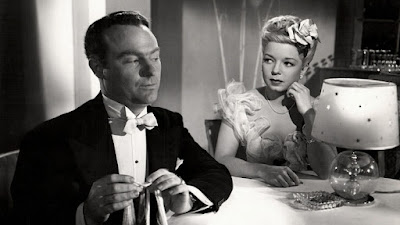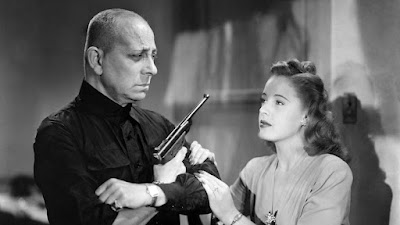 |
| One of the six tapestries: Tenture de la dame à la licorne-le gout -Cl.10831 -1 - N° Inventaire : Cl. 10831 à 10836 |
Musée de Cluny, Musée National du Moyen Âge
28 rue du Sommerard
75005 Paris
Visited on 17 April 2024
GUIDE BOOKS:
Musée de Cluny, Musée National du Moyen Âge: A Guide (2015), 192 s.
Élisabeth Taburet-Delahaye & Béatrice de Chancel-Bardelot : The Lady and the Unicorn (2018), 120 s.
MUSÉE DE CLUNY: TAPISSERIES DE LA DAME À LA LICORNE:
" Le Toucher, le Goût, l’Odorat, l’Ouïe et la Vue… et une sixième pièce, avec une tente bleue et l’inscription mon seul désir : immédiatement reconnaissables, les tapisseries qui forment la tenture de la Dame à la licorne sont parmi les œuvres les plus célèbres des collections du musée de Cluny. "
" Le fond rouge et un même schéma de composition unissent les six tapisseries. Sur un grand ovale bleu, la Dame, élégante, parée de bijoux et souvent assistée d’une demoiselle, se tient solennellement, entre un lion et une licorne porteurs de bannières, de capes ou d’écus à trois croissants. Ce groupe est encadré par des arbres de quatre essences : des chênes, des orangers, des pins et des houx. Le sol des six "îles" est planté de fleurs, et les fonds rouges sont parsemés de plantes à fleurs et d’animaux : lapins blancs, renardeaux, un lionceau, des agneaux, des oiseaux… mais aussi des singes ou une panthère… "
" Les armoiries, de gueules (rouge) à la bande d’azur (bleu) chargée de trois croissants d’argent (blanc) ont permis d’identifier la famille qui a fait tisser ces pièces : les Le Viste, originaires de Lyon, mais possédant des terres en Bourgogne et des résidences parisiennes. L’identité du commanditaire reste l’objet de débats : ce serait soit Jean IV Le Viste, mort en 1500, soit son neveu Antoine, mort en 1532, deux personnages de l’époque des rois de France Charles VIII et Louis XII, pourvus de charges dans la haute administration du temps. "
" Les modèles des femmes et des animaux à grande échelle ont été dessinés par le peintre Jean d’Ypres. Actif à Paris de 1489 à 1508, il est connu comme enlumineur au service de la reine Anne de Bretagne et comme auteur de modèles pour des vitraux ou pour des gravures illustrant des livres imprimés. Les plantes et les animaux ont pu être tissés à partir de modèles détenus dans les ateliers des liciers. Le tissage est très soigné, voire virtuose, mais le lieu de production des tapisseries n’est pas connu. Elles peuvent provenir des métiers à tisser implantés aux Pays-Bas méridionaux, dans des villes comme Bruxelles ou Tournai, mais elles pourraient tout autant être l’œuvre des liciers parisiens. "
" Un sentiment de paix et d’harmonie se dégage des six tapisseries. On y voit peu d’objets et d’accessoires, tandis que les vêtements et les bijoux sont décrits avec attention. Les végétaux et les animaux sont partout représentés, tantôt stylisés, tantôt inspirés par l’observation directe. "
" La tenture a été comprise de diverses manières, en particulier en fonction de l’interprétation que l’on peut faire de la sixième pièce. Comment comprendre l’inscription, comportant deux initiales, A et I encadrant l’expression mon seul désir ? Peut-être les prénoms d’Antoine Le Viste et de son épouse Jacqueline ? La Dame prend-elle ou remet-elle un collier dans le coffret tendu par la demoiselle ? Est-ce une allégorie des sens et d’un sixième sens, proche de l’âme et du cœur ? Peut-on faire une lecture courtoise de ces tapisseries, puisque la Dame est dans un jardin où nombre de plantes et d’animaux font allusion à la quête amoureuse ? Mon seul désir est-il une devise ? Quel sens donner au mot désir, dans un monde encore profondément chrétien, mais au seuil de la Renaissance ? "
N° Inventaire : Cl. 10831 à 10836
Hauteur : 311 à 377 cm
Largeur : 290 à 473 cm
Complément d'information sur le lieu : Lieu de production : Paris (réalisation des cartons)
Périodes : 4e quart du 15e siècle; 1er quart du 16e siècle
Technique : tapisserie
Œuvre incontournable
AA: Before entering the Musée de Cluny, there is time to visit the medieval garden and meditate by the ruins of the Roman Empire. My first visit to the museum is focused to one room only, Salle 13, dedicated to the six huge tapestries of the La Dame à la Licorne cycle.
I only know them from illustrations and reproductions, including in Harry Potter movies. Seen for the first time "live" in the dim, tender lighting of Musée de Cluny, they cast a magic spell.
They are breathtaking. I have never seen anything like them. They are subtle, refined and vivid. Medieval discipline is combined with a Renaissance sense of life.
Wool and silk threads join in a rich and warm union. The colours may be fading but they are still mesmerizing. The glow is unique and mysterious.
In the guide to the six tapestries, Rainer Maria Rilke's Die Aufzeichnungen des Malte Laurids Brigge (1910) is liberally quoted. He writes about each. The experimental novel, an early exercise in the stream of consciousness, is in public domain and legally online. In the Zeno online publication, the Dame à la Licorne passage is on pages 64-66.
Five of the tapestries are dedicated to the senses of the touch, the taste, the smell, the hearing and the sight. The sixth gives a clue to its sense in the coat of arms "À mon seul désir". What does it mean?
What is the sixth sense? The other senses are physical, and this one might be spiritual. It might be intuition. It might be the wisdom of the heart. It might be the sense of the sacred. It might be love.
The six senses have also been linked with six virtues of medieval nobility: richesse (wealth), franchise (pure and direct sensation), beauté (rapture of the soul towards harmony), liesse (an elevation of the soul), oiseuse (appearance) and largesse (generosity).
I was alerted to these tapestries a year ago by a film, À mon seul desir (FR 2023) by Lucie Borleteau. It is about the desire of the body, but the secret of that matter is that it is always also about the desire of the soul.













